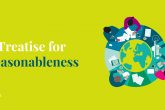
Bilingual education models are impressive in theory, but they’re usually less effective in practice. What strategies can schools put in place to ensure that every teacher truly is a language teacher?
‘Every teacher is a language teacher’ – or are they?
As interest in bilingualism rises, so do numbers of students being schooled in languages other than their first/home language. Parents are actively seeking out immersion-style or bilingual education for their children, in both the private and public sectors. The language most often desired as the language of instruction (LoI) is English, due to the perceived need for English in an increasingly globalised world. The International Schools Consultancy, the largest source of data on international schools, estimates that there are currently over 5 million students studying in English Medium Instruction (EMI) schools, over 80% of whom are local students.¹ These numbers are expected to continue rising in the coming years. In order to address the needs of language learner students in these schools, many have adopted an ‘every teacher is a language teacher’ motto. While impressive in theory, this mandate is usually less effective in practice, for a variety of reasons.
Firstly, being a speaker of a language does not automatically give you the skills to be a teacher of language. Language teachers, like other teachers, undertake a clear educational pathway to give them the knowledge and skills to be effective language teachers. Presuming that any teacher can be an effective language teacher both underestimates and undervalues the body of knowledge that is specific to language teaching.
Secondly, being a language teacher requires a clear curricular strategy – a plan that allows for appropriate language development in both a horizontal (across a year) and vertical (upwards through successive years) trajectory. The aspect of vertical planning is often not attended to in international schools, due to lack of real expertise in planning and delivering language teaching.
And finally, immersion-style teaching does not adequately develop language, especially when it comes to academic language. Years of research on immersion settings have demonstrated that being taught througha language is simply not enough to develop full academic proficiency.²Schools need to also teach language, and teach about language, if they want their students to develop full academic proficiency.
What strategies can schools put in place to ensure that all teachers are planning for language development?
Developing a language-integrated curriculum requires using a framework, such as the one described here, ideally supported by language specialists.
Step One: Placing language objectives at the heart of planning
The first step in developing a language-integrated teaching (LIT) approach is placing language objectives at the heart of the curriculum planning process (and documentation). If we are presuming that every teacher is a language teacher, then every teacher needs to be planning like one. This means that the planning process must involve setting clear language objectives, alongside content objectives. The language objectives should be connected to the summative assessment, in terms of developing student language towards the target language in assessments. Language objectives should include functional language: what do we want them to do with language? Some examples of language functions are explanation, description, argumentation, hypothesis, etc. Language objectives should also include vocabulary from all three tiers, as necessary.
The three tiers are:
Tier 1 Basic everyday vocabulary
Tier 2 High frequency, cross-content vocabulary
Tier 3 Academic Vocabulary
Each of these groups needs to be considered when setting language objectives, and differentiated for English language learners of differing proficiency levels.
Step Two: Aligning objectives
The second step is to address alignment across each year group, and vertically through the school. This includes confirming that content objectives, language objectives, and expectations in assessment are aligned. Once horizontal alignment is set within a year group, then the vertical alignment needs to be addressed. This entails considering the language objectives for each year, and ensuring that the subsequent year builds on what the students have been developing, as scaffolds to improving language development. Once this system is in place in the planning process, any teacher can access the language development trajectory from a previous year, to see what their students should already be able to do, and continue to build on those skills. This helps avoid both repetition in focus and gaps in language development.
Ensure that every teacher truly is a language teacher
Building a solid language-integrated curriculum is the only way to ensure that every teacher truly is a language teacher in international schools. Having such a programme in place will not eliminate the need for language specialists, as they have a critical role to play in supporting teachers in the development of LIT, and supporting new arrivals as well. It will, however, allow schools to maximise language development by having a curriculum specifically designed to address the expectation of language learning alongside curricular learning, which is currently a missing critical element in English-medium education.
References
1 SC. (2018). ISC Research. Retrieved January 28, 2019, from International Schools Consultancy: https://www.iscresearch.com/
2 Lyster, R. (2007). Learning and teaching languages through content: A counterbalanced approach. Amsterdam: John Benjamins.
About the author
Eowyn Crisfield is a Canadian-educated specialist in bilingualism, bilingualism in education, and teacher-training. She holds a B.Ed. in Teaching English as a Second/Foreign Language, and a Master of Arts in Applied Linguistics, with specialisations in language learning and teaching, and bilingual education. Eowyn has over 20 years of experience in the field of Applied Linguistics, and has a background that covers research, teaching and teacher-training, and supporting bilingual families. She is currently an Associate Lecturer at Oxford Brookes University, lecturing on the Post-Graduate Certificate in Teaching Multilingual Learners and the MA TESOL.
Eowyn will be speaking at the ECIS MLIE Multilingual Learning Conference in London (28 February – 3 March 2019).
Looking for more?
Cornerstone and Keystone Facebook Group is a global community designed for primary and secondary English teachers with a common interest in accelerating English proficiency and preparing children for academic success. The group is based on the Pearson Cornerstone and Keystone programme – a six level intense primary course for reading and language development. The group is an open group for teachers as a discussion and ideas forum for teachers to share and converse with each other.

